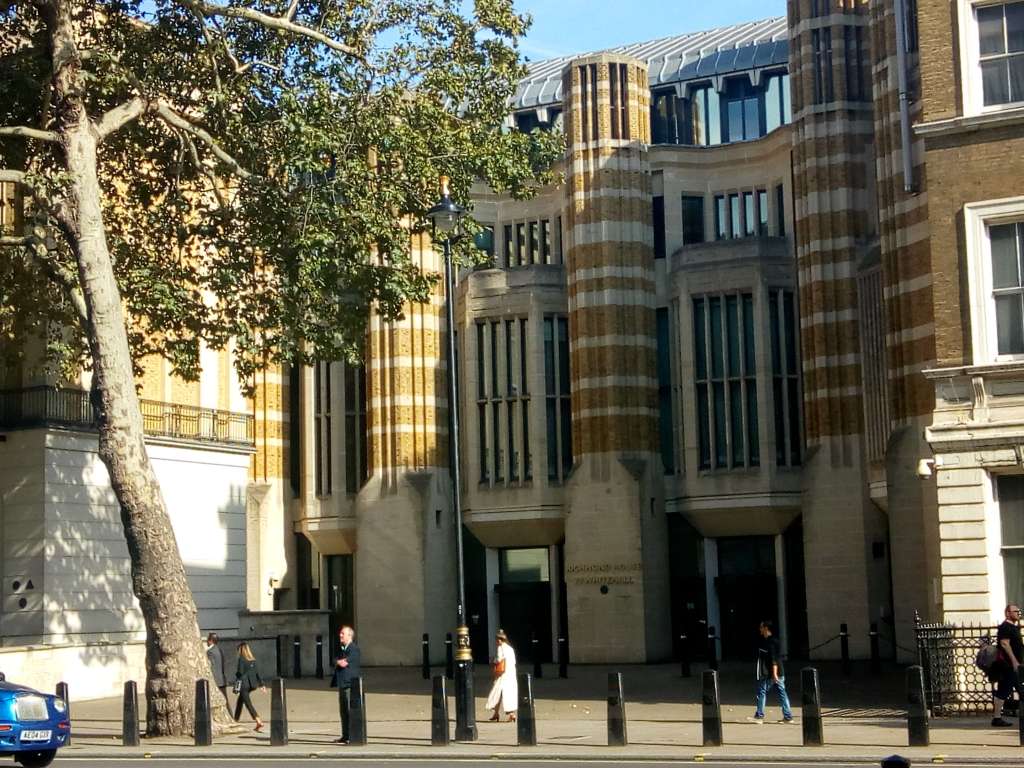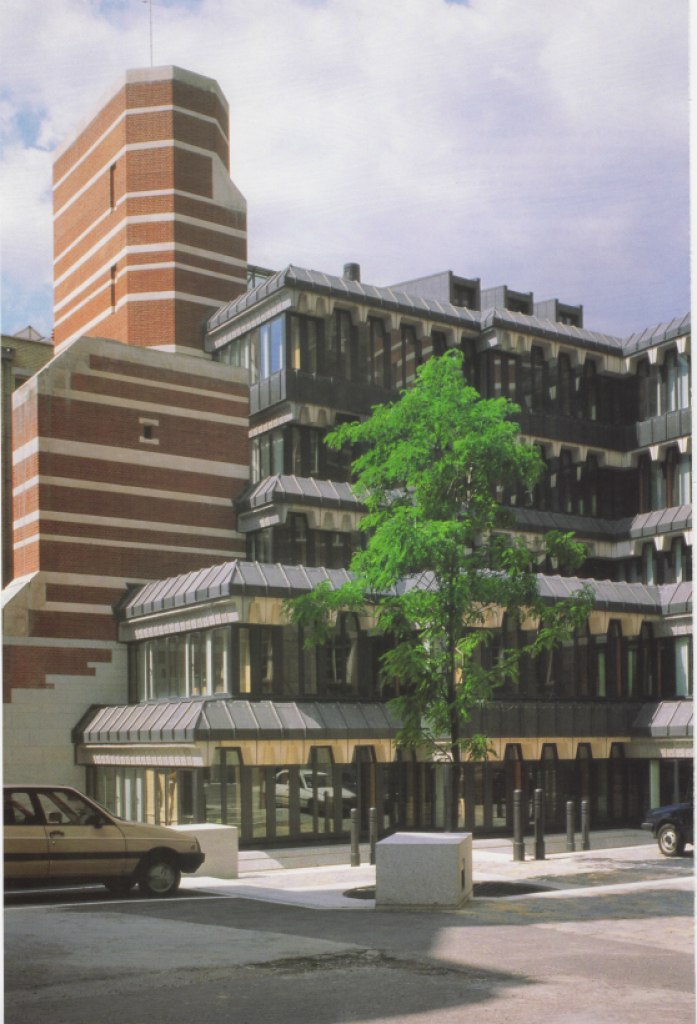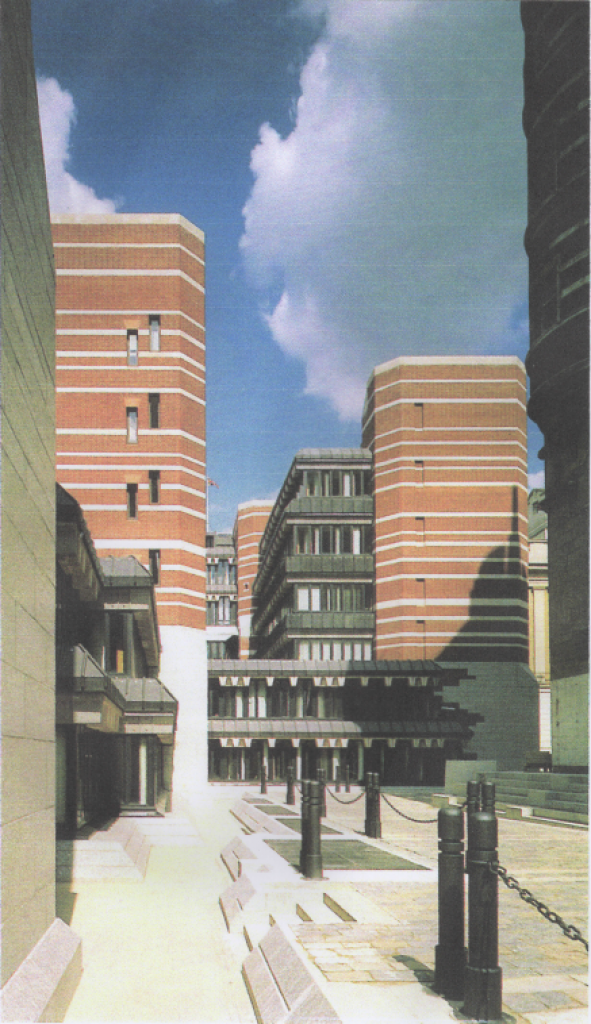PRESS RELEASE: SAVE condemns plans to demolish historic building as 'state sponsored vandalism'
8 May 2019
SAVE Britain's Heritage has condemned plans to demolish a historic building on Whitehall as "state sponsored vandalism of the first order". Richmond House, the former department of health HQ in central London is set to be flattened, apart from the front facade, to make way for a temporary House of Commons under plans unveiled today by the Restoration and Renewal Programme. The temporary chamber would be used for just 7-8 years while the neighbouring Palace of Westminster is refurbished.
Demolishing this fine, high quality building for a temporary chamber is a very expensive decision - estimated by parliament to be at least £300-£400 million. Yet there are other options, such as the large internal courtyards of both the Foreign Office and HM Treasury, the atrium of Portcullis House or the recently unveiled Norman Foster scheme proposing new chambers for MPs and Lords on Horse Guards Parade. We have repeatedly asked to see the analysis and costs of alternative sites for the chamber on the parliamentary estate that have been considered in this decision making process. This information has not been forthcoming.
Marcus Binney, executive president of SAVE Britain's Heritage said: "The destruction of Richmond House is state sponsored vandalism of the first order. It is also a grotesque waste of public money to destroy a 30 year old government building, constructed to an exceptional high specification to make it worthy of Whitehall."
Marcus Binney added: "The proposals are extravagant, time wasting and destructive. They are born of a bizarre fixation with providing a totally unnecessary permanent third chamber which will spend most of its time empty unless MPs decide they prefer it to their existing home which would render the whole renovation exercise pointless."
Henrietta Billings, director of SAVE Britain's Heritage said: "This expensive, destructive proposal must be fully scrutinised and justified as part of the decision making process. We know there are alternative sites - which could be cheaper, quicker and far less destructive - it's essential they are fully explored and costed against the vast and approximate budget set out today for the demolition of grade II * listed Richmond House."
Initially the proposal was to place the temporary chamber in the courtyard of Richmond House which (in theory) could have been reinstated when the refurbishment of the house of Parliament is complete. However proposals now under consideration involve the complete loss of Richmond House except for the Whitehall frontage. The Twentieth Century Society is also strongly supporting the campaign to save Richmond House.
Richmond House was listed Grade II* just four years ago. Designed by Sir William Whitfield, it was the most expensive public sector office building ever built. Constructed of the finest materials, it was designed to be a worthy neighbour of the Foreign Office, HM Treasury and Norman Shaw’s gabled and bartizaned Police Headquarters (aka New Scotland Yard) which it backs onto.
Richmond House was completed at the time when the IRA posed a major threat and press coverage was therefore limited. The most comprehensive article appeared was written by C20 Society stalwart Roderick Gradidge for Country Life (1988). Whitfield was described as “one of the most distinguished architects of his generation… There has been no staircase as grand as this in a Whitehall Office since [George Gilbert] Scott built his intentionally overpowering staircase in the Foreign Office… one must go back to the 19th century to find any such imposing government offices.”
Whitfield gave added strength to his courtyard frontages with staircase towers subtly echoing the “streaky bacon” banding used by Norman Shaw. And instead of the usual flat curtain wall of glass for the offices, Whitfield produced a novel version of the ziggurat using lead as well as glass to create strong patterns of light and shade. This is sculptural modelling of a high order, echoing the inspired Whitehall frontage. Whitfield’s building is laid out like a giant capital F. This means that every desk can be near a window with natural light.
William Whitfield excelled in different modes: he produced a brutalist masterpiece in bush-hammered concrete beside the Institute of Chartered Accountants, he restored the Savoy Theatre to its shimmering silver Deco glory, and he designed the grandest new neo-classical house in England at Tusmore Park in Oxfordshire. He was also chosen as the man to build in the closes of Canterbury, Hereford and St Albans Cathedrals.
Ends
For more information/more images contact SAVE on 020 7253 3500 office@savebritainsheritage.org



